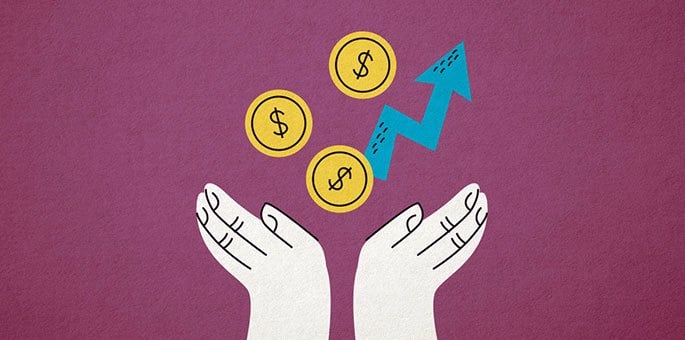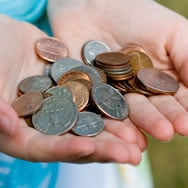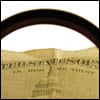Bitcoin, gold, mutual funds, ETFs, index funds, bond funds, real estate ... all of them? Where should we invest our money? We want our money to be growing faster than inflation, and we want it safe. I get it!
Without discounting the individual merits of any of these investment choices and vehicles, or the importance of diversification among asset classes, I will argue that none of them—individually or within a well-diversified portfolio—come even close to a Torah-prescribed investment that no financial guru ever told us about: maaser.
You never thought to look into the Torah for financial advice? Neither did I. But after suffering a financial loss, I started taking my finances more seriously, and I realized that there had been one major flaw in my financial system up until now. Where was the maaser?
What is maaser?
It’s short for maaser kesafim. Maaser comes from the Hebrew word eser, “10,” and kesafim comes from the word kesef, “money.” So, it refers to the mitzvah of giving away one-tenth of your income to charity.
‘Excuse me! Do you know how much charity I give!?’
I don’t, but I’m sure you give a lot! In fact, every Jew is generous. It’s in our spiritual DNA. I also thought I was a generous person until I did the math. In fact, most of us overestimate how much we give (similarly, we tend to underestimate how much we spend) and when we do the math, we might shockingly realize that we don’t come even close to giving 10 percent of our annual income to charity, as prescribed by Torah law. But this is not about generosity as much as it is about investment math and financial acumen.
OK, so how does this ‘investment’ work?
I’m glad you asked.
When the Talmud discusses the Torah verse Aser te’aser—“you shall surely set aside a tenth”1 —it explains, “Give a tenth in order that you will become wealthy.”2 In fact, the Talmud narrates numerous stories showing how those who are strict about maaser become wealthy and those who aren’t lose their wealth. There’s nothing random about the gains or the losses, actually, and the math is quite precise. As Rabban Gamliel used to say: “Do not tithe by guesswork … .”3
It’s all based on a 90-10 partnership with the Creator of the world, the Source of all money, as the prophet says, “Mine is the silver and mine is the gold.”4 As long as we are good managers, we get 90 percent and G‑d gets 10 percent. Moreover, our 90 percent is a security backed by G‑d Himself! He says, “Test me on this!”5 In fact, this is the only mitzvah in which we are allowed to test G‑d. Talk about sure gains!
There’s one caveat, though. The moment we skirt our obligation as “wealth managers,” the roles of the partnership swap. Our partner, G‑d, now keeps 90 percent, and we get 10 percent. Yes, the Talmud explains that when we do not tithe the income that G‑d gives us, we will receive just the tithe!6 I don’t know about you, but I’m not willing to take that risk.
The Talmud narrates the story of a rich man who owned a field. This field produced a thousand kor (think of it as tons) annually. Thus, every year, following the Torah precept of tithing, the separated 100 kor as tithes. Upon his deathbed, he called his son to give him final instructions: “My son, know that this field that I am giving you for inheritance yields a thousand kor every year. Make sure that you will separate 100 kor as I did throughout my lifetime.” The rich man then passed away.
His son was now the owner of the field. Just as his father had told him, it yielded 1,000 kor. Dutifully, the son-turned-businessman separated 100 kor. The second year, however, the tithe started feeling burdensome to him. “It’s too much!” he thought to himself. He did not tithe. To his dismay the next year, the field produced only 100 kor. Mistakenly, he thought he’d been saving himself some money. And so could we.
But in thinking like this, we make a fatal mistake. Such was the case in the times of Rabbi Pinchas Ben Yair, when farmers were dumbfounded as to the mysterious mice infestation that was eating away their produce. When the farmers told Pinchas Ben Yair about their problem, he called a meeting of all the mice. Yes, he, like King Salomon, understood the language of animals.
“Why do you steal the grain?” he asked the mice. To which they confidently replied: “We are free to do so, as the farmers did not tithe their harvest!”
Now, as many of us, these farmers were not going to stand being told they were not generous. “We did tithe the harvest!” the farmers protested.
“Are you sure you gave as much as you were supposed to do?” asked Rabbi Pinchas. “Or did you just guess?”
And, of course, the farmers then admitted that they had not been as careful as they should. As soon as they were careful to tithe, the mice disappeared.
The Sefer Chassidim says, “Woe to those who withhold their maaser, for in the end they will be left with nothing, but 10 percent of their initial holdings.”
Reb Yaakov Horowitz, the brother of the Shalah Hakadosh, writes in his commentary to his father’s will: “This is something that you can see with your own eyes: That in places where they were careful and accustomed to tithe properly, they became exceedingly wealthy; and their wealth stayed in the family for the next generation to enjoy. Whereas, in places where people were not careful to tithe, they lost their wealth in a sad and tragic way.”
So, just as our sages told us in the Mishnah, giving “maaser is a fence”—a protection for your wealth.7
How do I do it?
The good news is that implementing a system to account for our maaser is quite simple.8 Here are a few simple steps you can take:
1. Open a separate bank account.
The most important step to do this correctly and avoid any mistakes is to open a separate bank account. Make sure it’s one that is free and allows you to easily make transfers.
2. Make those transfers.
Now all you have to do is either automatically, or manually transfer 10 percent of your after-tax earnings into that account without fail.
3. Give regularly.
You will now be able to send money to those in need easily from that account. This will be the one account that you’ll love emptying out! Additionally, you will now always be in a position to give, regardless of how much you’re earning. And there’s no better way to feel rich like when we give!
4. Use a spreadsheet (optional).
If you want to be extra-organized, keep a spreadsheet with one column for earnings and one for donations, which you update regularly. It will make Step 5 much easier.
5. Make an annual accounting.
Decide ahead of time if you will do your accounting based on the fiscal year or the Hebrew year. Either way, right before the end of the year, calculate your entire earnings for the year and what you have given. Make sure the giving added up to 10 percent of your after-tax income for the year. If you still “owe” maaser, then send the amount to charity right away. If you overgave, then discuss with a halachic authority whether you’re allowed to roll over the amount into the next year’s giving.
So, does it really matter whether you invest in bitcoin, real estate, gold or index funds? Yes, but only if you first and foremost are investing in the only investment that has guaranteed returns: maaser. Everything you do with your money beyond that will surely be blessed.








Todah Yael.
I have been slacking off on tithing. 2025
Baruch Hashem.
Thank you for the reminder.
I will have a separate account and transfer my tithes immediately when paid.
Thank you Adonai for the reminder. Thank you Yael.
PS. Is it ok to give some of the tithe to my widowed mother who lives alone?